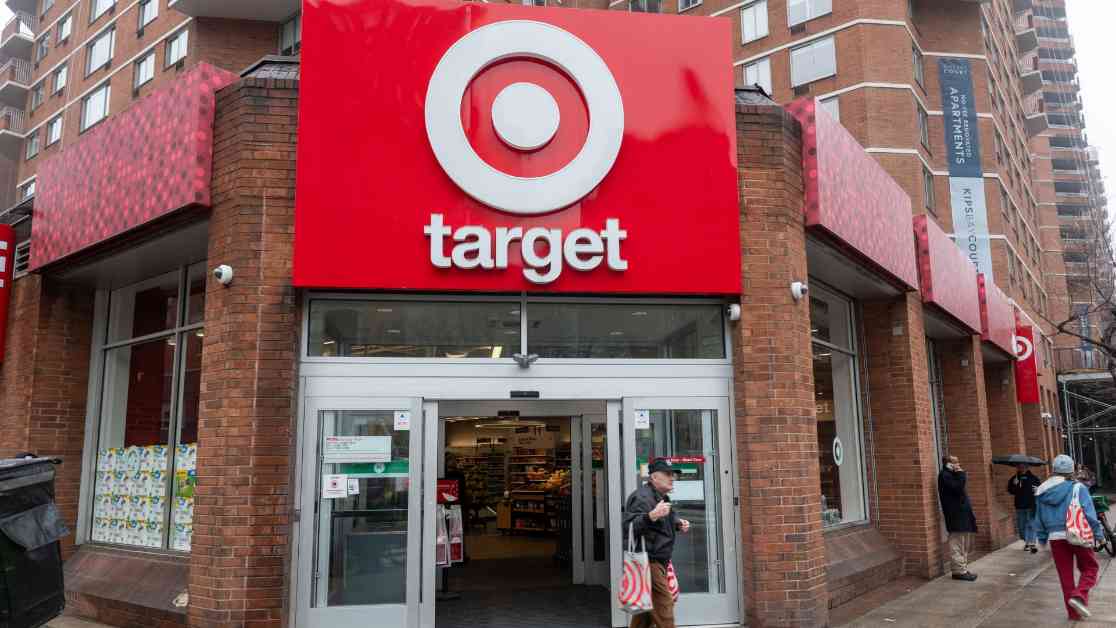Target, one of the largest discount retailers in the United States, recently announced a surge in profits that drove their share prices up. The company reported a 3% growth in sales for its fiscal second quarter, marking a return to growth after a period of sluggish sales and squeezed profits. This positive news was well received by investors, with Target’s shares rising more than 10% in premarket trading.
Target’s success in the second quarter can be attributed to several factors. Shoppers made more visits to Target’s stores and website, purchasing more discretionary items like clothing. The company exceeded Wall Street’s earnings and revenue expectations, demonstrating its ability to attract and retain customers in a competitive retail environment.
Despite the strong performance in the second quarter, Target maintained a cautious outlook for the full year. The company expects comparable sales to range from flat to up 2%, with the increase likely to be in the lower half of that range. However, Target raised its profit guidance, projecting adjusted earnings per share to range from $9 to $9.70, up from the previous range of $8.60 to $9.60.
Michael Fiddelke, Target’s Chief Operating Officer, emphasized the company’s measured approach to its outlook, citing uncertainties in consumer behavior and the macroeconomic landscape. While Target has been pleased with its performance so far, Fiddelke acknowledged the challenges of predicting future trends and economic conditions.
Target’s success in the second quarter was reflected in its financial results. The company reported earnings per share of $2.57, surpassing Wall Street’s expectations of $2.18. Revenue also exceeded estimates, totaling $25.45 billion compared to the projected $25.21 billion.
Target’s ability to drive profits and attract customers is particularly impressive given the challenges facing the retail industry. Consumers are prioritizing essential expenses like food and housing over discretionary purchases, impacting retailers like Target. Additionally, the rise of organized retail crime has posed a threat to retailers’ profitability.
Despite these challenges, Target has managed to improve its performance in the second quarter. The company’s net income increased to $1.19 billion, or $2.57 per share, representing a more than 40% year-over-year growth. Total revenue also rose from the previous year, demonstrating Target’s resilience in a challenging retail environment.
One key factor contributing to Target’s success is its focus on digital sales. The company experienced significant growth in online sales, driven by services like curbside pickup and home delivery. Digital sales increased by 8.7% in the second quarter, indicating a shift in consumer behavior towards online shopping.
In addition to digital sales, Target has implemented strategies to drive higher foot traffic and increase customer loyalty. The company relaunched its loyalty program earlier this year and introduced a new paid membership, Target Circle 360, offering perks like free same-day deliveries. Target also cut prices on thousands of frequently purchased items, attracting price-conscious consumers.
CEO Brian Cornell credited the price reductions for contributing to traffic growth in the second quarter. Customer traffic across Target’s website and stores increased by 3% compared to the previous year, reflecting the success of Target’s pricing strategy. While the average size of customers’ shopping baskets slightly declined, discretionary sales, such as apparel, showed improvement.
Target’s back-to-school season has been particularly successful, with customers gravitating towards value-oriented items like backpacks and school supplies. Chief Commercial Officer Rick Gomez noted that back-to-school shopping tends to be a longer season, as students gradually decorate their apartments and dorms. Target’s ability to meet customer expectations during this critical shopping period has contributed to its overall success.
Looking ahead, Target remains focused on driving sales and profitability while adapting to changing consumer preferences. The company’s strong performance in the second quarter demonstrates its resilience and ability to navigate a challenging retail landscape. As Target continues to innovate and evolve its business model, investors can expect continued growth and success in the future.






















